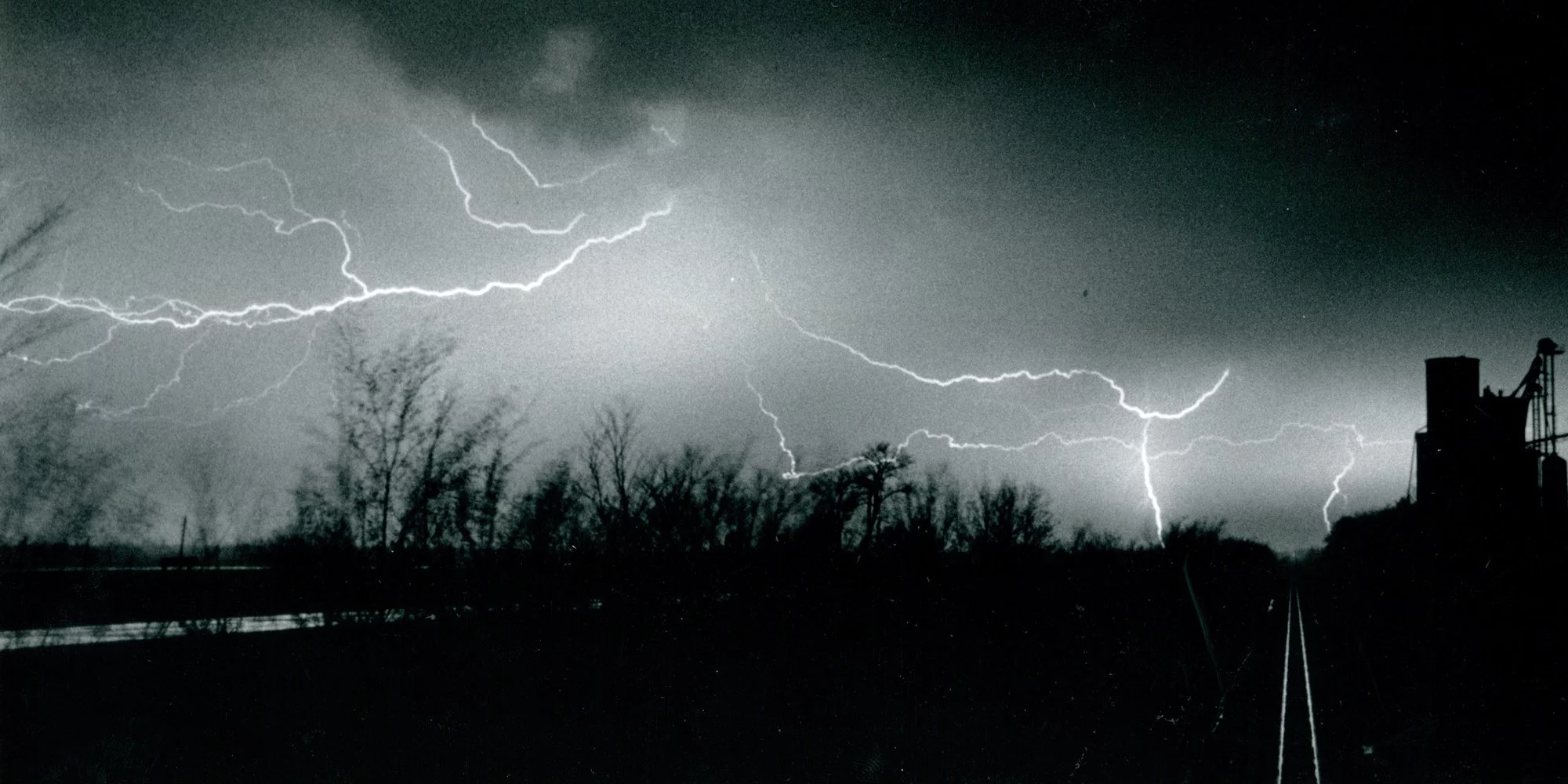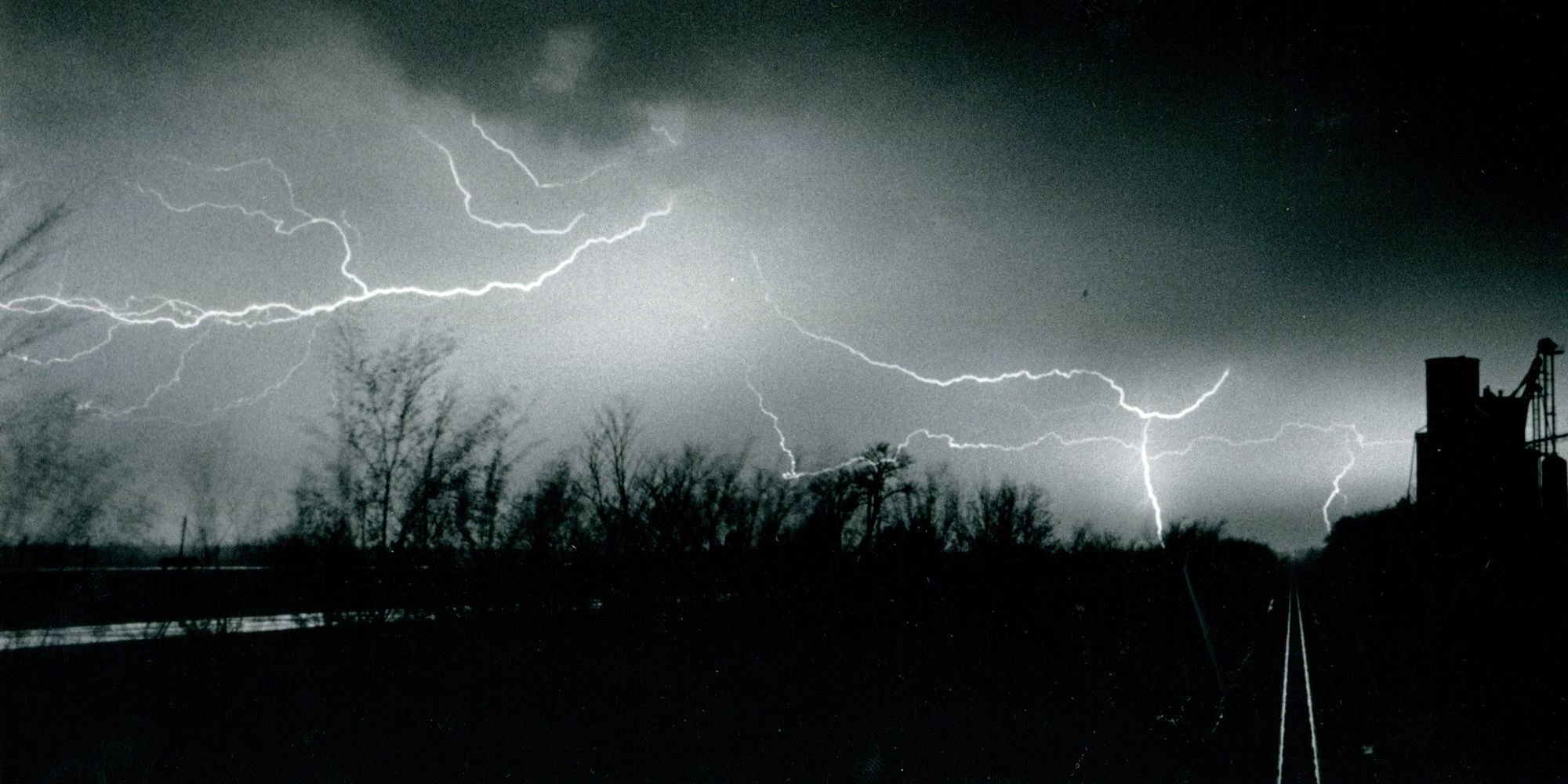On May 20, 1897, a heavy afternoon shower accompanied by a “brilliant electrical display” passed through the Lexington area, catching 18-year-old John Hays in open country upon a horse and a dog at his side. Hays, who lived about six miles northwest of Lexington, was a little ways from home when death came calling for him and his companions.
“A lightning bolt descended from the clouds and all three were instantly killed,” reported The Pantagraph. “After the storm the boy and the animals were found lying close together.”
In “A Midsummer Night’s Dream,” Shakespeare wrote of love being, “Brief as the lightning in the collied [coal black] night.” And brilliant though the flash—of love or lightning—may be:
The jaws of darkness do devour it up:
So quick bright things come to confusion.
Although there are no ready statistics available on the number of Central Illinois residents killed by lightning in the 19th century, the assumption among meteorologists and historians is that the fatality rates were higher back then because many more people spent their days working outdoors than they do now. Today’s up-to-the-minute weather reporting and warnings have also likely reduced the number of lightning fatalities.
According to figures compiled by the National Oceanic and Atmospheric Administration, lightning killed an average of 26 people a year in the U.S. between 2012 and 2018. Most injuries and deaths come not from direct strikes but ground current, such as being near a tree hit by lightning. Incredibly, only about 10 percent of those struck in the U.S. are killed, though survivors often have severe burns, organ damage and long-term or permanent injuries. They can also suffer from difficult-to-diagnose emotional problems.
Local dentist Joseph Payne survived a lightning strike on March 28, 1859, while visiting the Stout’s Grove home of J.W. Hanger, located about 14 miles west of Bloomington. A little more than one month later, Payne offered Pantagraph readers a detailed account of his ordeal. He noted that by following the line of splintered and shattered wood from the home’s rafters to its floorboards, one could trace the exact path of the lightning “with as much certainty as a man could be tracked through the snow.”
Payne was leaning against a wall with his legs crossed, one foot touching a stove used to heat the room in colder months, when lightning burst through the wall, striking him square in the back. The current ran down the right side of his body, passing to the left side where his legs were crossed, and thence to the stove, shattering the wood box in the process.
The strike melted Payne’s keys and watch chain, while the clothes on one side of his body and one boot were blown to bits, The lightning, after continuing into the kitchen and punching two holes in the floor, “exhausted itself in the earth,” but not before killing a dog and four chickens seeking refuge under the home.
For about half a minute afterward Payne found himself enveloped in darkness, his head ringing and vibrating “without the slightest sensation of pain, and just sufficient consciousness left to know something had happened.” He woke up flat on the floor, “perfectly paralyzed and my clothing in flames a foot high.” J.W. Hanger attempted to smother the flames with his hands before James Gunnell, another visitor, doused the fire with two buckets of water.
In a matter of hours Payne began feeling like himself, though a nasty six-inch-wide burn running from shoulder to knee consigned him to bed for three weeks.
Perhaps the most prominent area resident killed by lightning was 46-year-old William H. Hanna, an attorney who dated his practice to the days of Abraham Lincoln and the Eighth Judicial Circuit. On August 5, 1870, around 11 p.m., Hanna and his wife Frances were in their bedroom sleeping though an “extraordinary electrical phenomena” when lightning struck their 209 E. Grove St. home (today this lot is occupied by Beck Memorial Home).
With her husband catatonic, a stunned but unharmed Frances roused herself after a few moments to summon for help, though when a doctor arrived William managed but a few final labored breaths before passing away. He showed little outward signs of bodily trauma, with the only visible marks above the shoulder and chest, “neither breaking or abrading the skin.”
In an era when horses were ubiquitous and the typical farm raised livestock of all sorts, lightning dispatched animals small and large with a frequency unknown today, at least in Central Illinois. On August 8, 1871, for instance, John Brawderick of Old Town Township found two young horses lying dead in their stalls, victims of a lightning strike. The value of horses was said to be about $300, or nearly $6,300 today, adjusted for inflation.
The “fiery fluid” (lightning was often described as such in the 19th century) left its mark when storms swept through the area on June 24, 1880. In the afternoon, lightning in the Hudson area claimed David Smith’s two best milch cows, and that night in Saybrook, lightning sparked a fire that gutted the Lake Erie & Western Railway depot.
Lightning never strikes the same place twice, or so goes the oft-repeated myth, but one 19th century McLean County farmer could point to a spot frequented by livestock that was struck not once but three times over a space of three years.
In the spring of 1890, J.B. Beckett of Blue Mound Township lost two cows congregating near a 40-foot windmill used to pump water. The previous year lightning claimed two of his mares and a colt at roughly the same spot, and the year before that, in 1888, a fine bull was struck and killed under the windmill.
“Mr. Becket has carried stock insurance since the bull was killed,” noted The Pantagraph.

